mourning cloak
(Nymphalis antiopa)
Conservation • Description • Habitat • Ecology • Distribution • Taxonomy
|
|
|||||||||||||
Description |
Mourning cloak is a large, dark, brushfooted butterfly. It has a wingspan of 2¼″ to 4″. Young butterflies are reddish-brown above with a wide yellow border at the outer margin and conspicuous, iridescent blue submarginal spots. The underside is dark, striated brown with a wide white border at the outer margin. Older individuals in May and June are dark brown above with a wide cream to yellow border at the outer margin and less conspicuous submarginal spots. The caterpillar is black with much white flecking, a narrow black line down the center, 2 rows of red spots, and numerous long, shiny, black spines. |
Size |
2¼″ to 4″ wingspan |
Similar Species |
Unmistakable. No similar species. |
Habitat |
Wherever host plants are found |
Ecology |
Season |
Mid March to Mid October. One brood emerges in June or July. |
Behavior |
|
Life Cycle |
This is usually the first butterfly seen in the spring because most adults overwinter. It is also one of the longest lived butterflies in Minnesota, living up to 10 months. Caterpillars live in a communal web. After the new brood emerges in June or July they enter a period of dormancy (estivate) similar to hibernation. They fly again in September and October. Most adults hibernate in the winter in hollow logs, wood piles, and loose bark. Some adults migrate south in the fall. |
Larva Hosts |
Young leaves of mostly willow, but also plains cottonwood (Populus deltoides var. molinifera), quaking aspen (Populus tremuloides), American elm (Ulmus americana), paper birch (Betula papyrifera var. papyrifera), and northern hackberry (Celtis occidentalis). |
Adult Food |
Mostly oak and maple sap, but also other tree sap, rotting fruit, and occasionally flower nectar. Often found at sapsucker holes in the spring. |
Distribution |
||
|
Sources |
|
| 7/6/2024 | ||
Occurrence |
||
Common |
||
Taxonomy |
|
Order |
|
Superfamily |
Papilionoidea (Butterflies) |
Family |
|
Subfamily |
Nymphalinae (checkerspots, anglewings, peacocks, and allies) |
Tribe |
Nymphalini (ladies, anglewings, and allies) |
Genus |
Nymphalis (tortoiseshells) |
Subordinate Taxa |
|
There are five or six subspecies of Nymphalis antiopa depending on the source. Though the species is very well known, the exact distributional boundaries of the subspecies are largely unknown. The subspecies in Minnesota is probably lintnerii, but it could be hyperborea, or both could be in the state. |
|
mourning cloak (Nymphalis antiopa ssp. antiopa) (southwest) mourning cloak (Nymphalis antiopa ssp. asopos) mourning cloak (Nymphalis antiopa ssp. borealis) mourning cloak (Nymphalis antiopa ssp. hyperborea) (Alaska) mourning cloak (Nymphalis antiopa ssp. lintnerii) (eastern U.S.) mourning cloak (Nymphalis antiopa ssp. yedanula) |
|
Synonyms |
|
Aglais (Nymphalis) antiopa Euvanessa antiopa Euvanessa chlapowskia Euvanessa intermedia Nymphalis grandis Nymphalis grisescens Nymphalis longomaculata Nymphalis obscura Nymphalis violescens Nymphalis virescens Papilio antiopa Vanessa albomarginata Vanessa angustata Vanessa antiopa Vanessa artemis Vanessa dorfmeisteri Vanessa emma Vanessa epione Vanessa escheri Vanessa flavomaculata Vanessa hippolyta Vanessa hygiaea Vanessa hyperborea Vanessa lintneri Vanessa nana Vanessa obscura Vanessa ochraceoguttata Vanessa pompadour Vanessa roederi Vanessa thomsonii Vanessa ziegleri |
|
Common Names |
|
camberwell beauty (UK) mourning cloak mourningcloak butterfly spiny elm caterpillar (larvae) |
|
Glossary
estivate
Enter a period of reduced metabolic activity in the summer, similar to hibernation.
Visitor Photos |
||
Share your photo of this insect. |
||
This button not working for you? |
||
Bobbi Johnson |
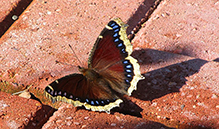 |
Around the garden... |
Honey Fae (Farah) |
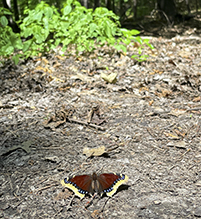 |
Greg Watson |
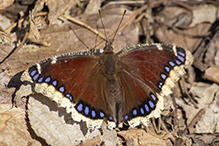 |
Molly and Robert Power |
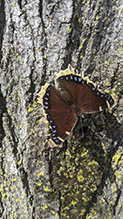 |
Drinking maple sap from a tap hole we drilled earlier this year |
Alfredo Colon |
||
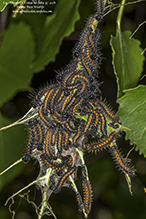 |
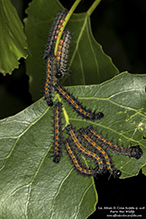 |
|
Tom Baker |
||
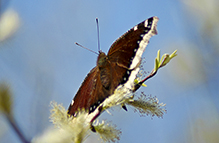 |
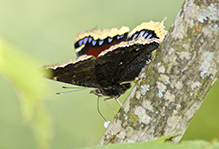 |
|
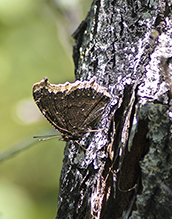 |
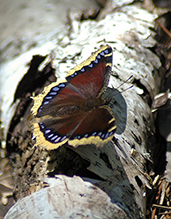 |
|
MinnesotaSeasons.com Photos |
||
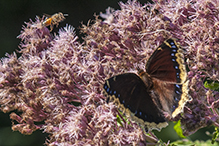 |
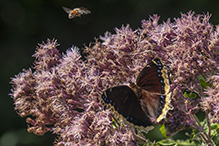 |
|
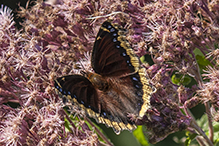 |
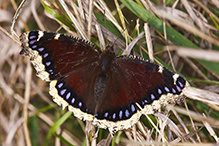 |
|
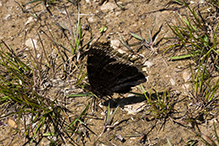 |
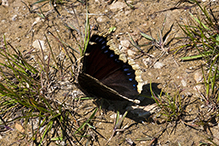 |
|
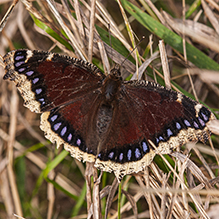 |
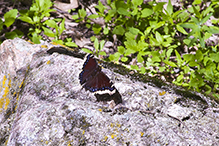 |

Slideshows |
Mourning Cloak Butterfly |
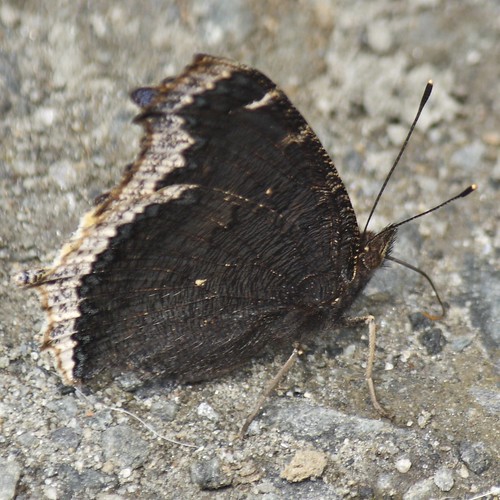
|
About
Nymphalis antiopa |
Nymphalis antiopa (Mourning Cloak) |

|
Mourning Cloak butterfly |
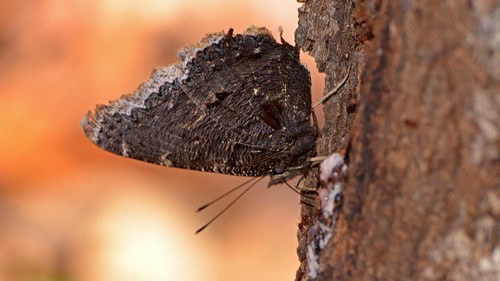
|
Mourning Cloak |

|
Mourning Cloak - Nymphalis antiopa |
About
Published on Jan 26, 2014 Nymphalis antiopa |

Visitor Videos |
||
Share your video of this insect. |
||
This button not working for you? |
||
|
Other Videos |
||
The flight of the Camberwell beauty (Nymphalis antiopa). |
About
Published on Oct 20, 2013 An extract of a documentary about the Camberwell beauty (Nymphalis antiopa). Discover the life-cycle of this magnificent and difficult butterfly to approach. All the different states of the cycle have been filmed, from the hatching of the egg up to the transformation into a chrysalis and finally the liberation of the butterfly itself in fabulous natural scenery. For more information visit our website Filming VarWild. http://www.filming-varwild.com |
Mourning Cloak Butterfly (Nymphalis Antiopa) |
About
Uploaded on May 28, 2009 A special treat is in store for you as you witness Mourning Cloak Caterpillars dance to Indian flute jazz. www.naturebytesvideo.com |
[HD] Nymphalis antiopa |
About
Published on Aug 27, 2012 Mourning Cloak (Nymphalis antiopa) is easy to identify because of its unique wing markings. The distribution of this species is covering almost all over Eurasia and North America. In Japan this species is confined to the mountains. It appears from middle August when other butterflies have already been worn. Flight is swift and glaceful. It rarely visits flowers, it is usually attracted by tree sap, rotten fruits or animal droppings. This species hibernate as an adult butterfly. In May or June worn butterflies with their wing edge in white are seen. |
Sorgmantel nymphalis antiopa |
About
Published on Jun 3, 2013 fjäril Sorgmantel nymphalis antiopa |

Visitor Sightings |
||
Report a sighting of this insect. |
||
This button not working for you? |
||
| Bobbi Johnson September 2024 |
Location: Silver Bay, MN Around the garden... |
Iris Katzke |
Location: Underwood, Mn |
|
| Honey Fae (Farah) 7/9/2022 |
Location: Hennepin County |
| Greg Watson 4/21/2022 |
Location: Eagles Bluff Park, La Crescent, MN |
| Molly and Robert Power 4/3/2021 |
Location: Albany MN Drinking maple sap from a tap hole we drilled earlier this year |
| Kate Nettleman 11/4/2020 |
Location: Superior National Trail, near Grand Marais I was astonished to see a mourning cloak butterfly flitting along Superior hiking trail north of Grand Marais today (November!) |
|
Jay Anderson |
Location: Chisholm, MN |
|
Brigid |
Location: Marine, MN. 55047 |
|
| Alfredo Colon Summer 2018 |
Location: Woodbury, Minnesota |
| Carol Nettleton 4/19/2019 |
Location: Oakdale Park Observed adult sitting in leaf litter in open woodland on the north side of the nature center. Temperature in mid 60’s and sunny. |
|
| Patricia Jensen 3/29/2018 |
I was in my backyard today and saw this butterfly sunning itself. Beautiful. Didn't know what it was until I looked it up. Will it survive our cold and snowy Spring? |
|
| John Valo 3/30/2018 |
Good question. The next day it snowed. JG saw an early one on March 22, 2016 (below). I don't know what the weather was like that year. |
|
| JG 3/22/2016 |
Location: Roseville Saw an adult in early this afternoon hovering over landscape bark at the base of a maple tree in our south-facing front yard |
|
| Annie 2015 |
Location: Sauk Rapids I have been seeing these in our neighbor hood all summer. We live in a swampy area with a lot of oak, popples, and willow trees. |
|
| Chuck Dick 6/18/2014 |
Hello: I have one of these in a cocoon on my deck railing. Looking forward to watching it hatch. |
|
| Carrie 6/18/2014 |
Location: Hiawatha Park Saw it cruising through the baseball infield at Hiawatha Park in Minneapolis. |
|
| Paul Martinek 7/29/2013 |
Location: Douglas Co. While researching what was eating my willow tree's I seen this email. I had a quite large infestation of these yesterday. Thought you might want to add douglas county as your sighting list. |
|
Crystal Boyd |
Location: Uncas Dunes SNA |
|
MinnesotaSeasons.com Sightings |
||

Created: 6/20/2009
Last Updated:





